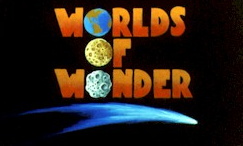 |
Worlds of WonderWorlds of Wonder investigates the exciting discoveries about the planets, moons, and other worlds of the Solar System made during the last two decades. Beyond the familiar nine planets, Worlds of Wonder explores some of the sixty moons, thousands of asteroids, and billions of comets that add mystery and adventure to out continuing investigation. You'll discover the constantly erupting volcanoes of the violent moon Io, as seen by the Voyager spacecraft. You'll see the monstrous Martian volcano Olympus Mons, dwarfing any on Earth; and delve under the obscuring orange clouds of the moon Titan to discover its bizarre methane oceans. |
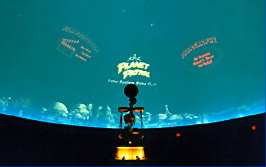 |
Planet Patrol: Solar System Stake-Out (3rd - 8th) 39 minJoin Sam Snork, P.I. (Planetary Investigator) and his assistant Elmo as they try to find the source of disturbing radio emissions coming from a nearby solar system. The solar system happens to be our own and Sam and Elmo visit all the planets in it looking for the radio source. They learn all about these amazing planets, and finally end up at Earth, where the radio noise is coming from. After commenting on the amount of pollution they found on Earth, they return to their home planet Nork, amazed at the diversity of planets they have seen. |
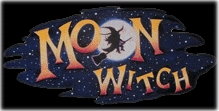 |
Moon Witch (2nd - 5th, family) 17 Min All around the world, people have imagined seeing all sorts of strange things and faces in the moon... Earthshine is sunlight bouncing off of the earth, and shining down on the moon, and then bouncing off the moon, and back to our eyes... This planetarium production examines the nature of the moon and its changing appearance in the sky. On Halloween we meet Billy and Diana, a brother and sister who are trick-or -treating. Diana notices that no matter where she goes the moon seems to follow. Back home, Mom and Dad explain moon appearance and motion. Diana continues to share her new knowledge of the moon with her teacher and classmates and demonstrates why the moon goes through faces or phases. |
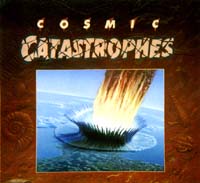 |
Cosmic Catastrophes (5th - Adult) 44 minWe investigate what sort of disasters could befall the Earth from space. It is widely accepted that large asteroids have hit the Earth in the past. The evidence suggests that this type of event might have caused the extinction of many life forms on Earth including the dinosaurs. Comets and asteroids have hit the Earth as recently as 100 years ago. Also investigated are the greenhouse effect, fluctuations of the Sun, and the comet that hit Jupiter in 1994. The program also includes a brief tour of the other planets in our solar system. |
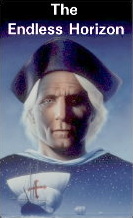 |
The Endless HorizonWhat sparks the torch of exploration? Is it the dream of distant shores, wealth, or power? Exploration is motivated by all of these factors, but often it is for the pure joy of scientific discovery. The Endless Horizon traces exploration through the ages, as mankind has ventured over land and sea in search of the unknown. Now we stand upon the shores of a vast cosmic ocean, our sailing ships are rockets and space probes gathering information, helping to give us a better understanding of our Universe. This show chronicles major exploratory feats of Columbus, Captain James Cook, Lewis and Clark, and their significance in human history. Narrated by Patrick Stewart, the show also discusses those who explored beyond the Earth - Kepler, Newton, and Galileo. The more recent explorations of James Maxwell, the Wright Brothers, Konstantin Tsiolkovski, and Robert Goddard give an historical perspective to the events that paved the way for the modern exploration of the planets and universe. Learn of the past and present efforts of the greatest explorers the human race has known. |
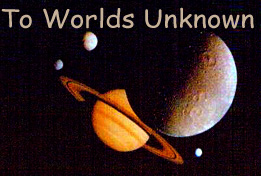 |
To Worlds Unknown 55 minThe new frontiers of the Solar System are explored as we take a "grand tour" of the planets. The Space Shuttle carries us into orbit for a rendezvous with a giant spaceship about to set forth on a mission which will include flybys or landings on all the planets. Come journey to the planets in our solar system. See the spectacular surface of Mars with its 17-mile-high mountain and 3,000-mile-long canyon. Experience the incredible volcanoes on a moon of Jupiter. Rediscover the planets and moons of our solar system as NASA space probes have revealed them. |
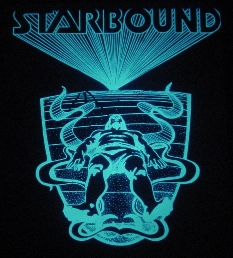 |
Starbound 55 minPrologue: Once upon a time... In a galaxy not so very far away... There existed a creature strange, With an insatiable thirst for knowledge. Now this is the peculiar part: The more it learned, the less it knew... For with every answer, came another question. Now this is the beautiful part: Of all the creature's thirsts, This one... brought him closest... to the gods.
It has been said that when man loses his desire to explore, the human race will have sounded its own death knell. If this is true then we have every reason to be optimistic about the future, for we live in the greatest age of exploration man has ever seen. Columbus had his Queen Isabella, his Nina, Pinta, and Santa Maria. We have our NASA and the dozens of spacecraft which have pushed back our frontiers almost to the limits of imagination. While practically everyone is familiar with the planetary space craft explorers: the Vikings, the Voyagers, the Pioneers... the general public is relatively unfamiliar with the star craft explorers which have given us a New View of the Universe, a New Astronomy. "STARBOUND" shows you this other side of NASA, and a newly revealed Universe that is spellbinding and awesome, bizarre, and wonderful. This lavish production is an overview of man’s progress in learning about the heavens. It begins with an exciting photomontage of current accomplishments in space. Next, there is a review of some of the bright constellations throughout the seasons. This leads to a chronological unfolding of the tools man used to reach his present state of knowledge of the universe and some examples of those exciting – and sometimes bewildering – discoveries. Galaxies, pulsars, black holes, and mysterious quasars are examined. (Written by: J. F. Horkheimer) |
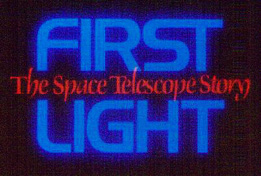 |
First LightUsing today's most powerful telescopes astronomers study the turbulent atmospheres of planets and their exotic moons; watch as stars are born and die violent deaths as white dwarfs, neutron stars, and black holes; follow the paths of the galaxies through our expanding universe. In First Light we trace the history of the telescope and explore the amazing universe that the telescope has unveiled. Discover why today's space-based telescopes, in particular the newly repaired Hubble Space Telescope, continue to open new vistas in our quest for distant starlight. |
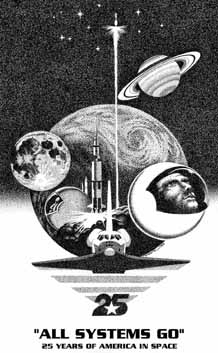 |
ALL SYSTEMS GO! (Grades 5 and up) 43 minThe story of NASA from its inception to the development of the Space Shuttle, with emphasis on the Apollo manned missions to the moon. |
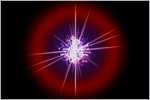 |
Stellar Evolution 20 minIn Stellar Evolution the audience soon learns that stars are not eternal, that like all living things, they have a beginning and an end. The program begins with an examination of the late autumn, early winter sky, where variable stars such as Delta Cephei, Mira, and T Tauri, are examined. Exploration of M-45, The Pleiades and M-1, the Crab Nebula reveal the existence of young stars being born and old stars dying. The show then demonstrates how stars are formed, and their eventual ultimate fate, which is dependent upon one thing! Their mass. This show illustrates what happens in the interiors of stars according to Chandrasekhar's Nobel Prize winning work which includes shell burning and nucleosynthesis. The program ends with the comment, "Look at the stars, what do you see now?" |
 |
A Comet Called Halley 43 minThis most famous of comets returns to our solar neighborhood on a regular basis. Named for Sir Edmond Halley, Halley's Comet has created stirs for those that lived in communities in the past. Audiences get to know more about the history and science of comets. A Comet Called halley combines history, science, spectacular visuals, and a captivating musical score. Babylonian astronomers believed comets journeyed in the realm of the planets. Greek philosophers debated whether comets belonged to the domain of the heavens or the Earth, and Aristotle's idea that comets were atmospheric phenomena dominated Western thought almost two thousand years. Comets were blamed as the cause of floods, plagues, and disasters. Scientist Tycho, Kepler, Newton, and Halley shaped the history of comet science with their pioneering work. It was Halley who forecast: "...the comets of 1531, 1607, and 1682 adhere to orbits of striking similarity... I therefore conclude that it is but a single comet, observed on three occasions, and predict its next return in 1758." On Christmas night, 1758, the comet did indeed return in triumph of Newton's laws of motion and gravitation and Halley's study of comet orbits. |
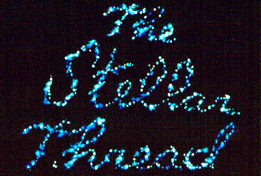 |
The Stellar ThreadThe DNA molecule is the part of us that spans generations. Found within the cells of nearly all living things, DNA can make copies of itself to create us, maintain us, and pass our biological traits to our offspring. "The Stellar Thread" shows that scientists are learning to reshape this fundamental unit of life, ordering microorganisms to make products of great value, such as the human insulin hormone. |
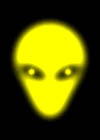 |
The Loneliness FactorThe first messages have already been sent. Man is trying to communicate with beings on other worlds. What makes us think there is life beyond the Earth? What would it look like? Could they understand our messages? Could they travel to our planet? Join the search for life beyond the Earth in "The Loneliness Factor." |
 |
Islands in the Sky 45 minEarly oceanic navigators in the Pacific traveled thousands of miles in tiny canoes, from island to island, to inhabit new lands and spread the unique island cultures that compose Melanesia, Polynesia, and Micronesia today. This incredible migration resulted from detailed knowledge of the Sun, winds, waves, animal life, and the simple, practical use of the stars as a compass to guide early travelers. Planetarium audiences will enjoys "Islands in the Sky" with its colorful and informative presentation that takes them to the enchanting Pacific Islands. |
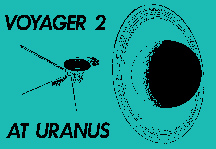 |
Voyager 2 at Uranus (Grades 5 and up) 14 minIn January of 1986, the Voyager 2 spacecraft encountered the planet Uranus and gave us a fascinating look at the seventh planet, its contingent of moons, and dark, mysterious rings. Voyager 2 At Uranus presents highlights of this exciting mission, and was created with technical guidance from Dr. James Warwick, Voyager Radio Astronomy Experiment Principal Investigator. The show recaps Voyager's previous encounters with Jupiter and Saturn, then highlights the discoveries about Uranus: its unusual polar tilt, atmosphere, and magnetic poles; the Uranian ring system, and the five major moons. It ends with a description of the extended Interstellar Mission, and the gold-plated record's sounds and images of Earth. |
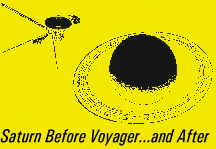 |
Saturn Before Voyager... and AfterOverview of Voyager mission. |
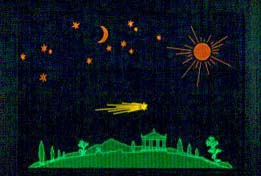 |
Comet Halley: Once in a LifetimeHalley's Comet, the most famous of all comets, last visited the inner solar system in 1986. Halley returns to the inner solar system on an average of every 76 years, thus linking human generations across a lifespan. The comet is called Halley to honor Edmond Halley, the 18th century English scientist who was first to recognize that comets travel in predictable orbits about the sun. For centuries comets were objects of fear and superstition. When Comet Halley paid a call in 1910, Americans sealed their doors and windows, and bought gas masks and "comet pills" as protections against the "noxious vapors" as a portion of Halley's tail swept across the Earth. Today we know that comets are "dirty snowballs," pristine material left over from the birth of the solar system and that Halley's Comet is less than 4 miles in diameter yet it developed a gaseous coma larger than Jupiter and a tail 50 million miles long. |
 |
Back Seat Astronomy 20 minThis show gives a look at the summer skies. This show opens with Roger, Lulu and Lulu's kid brother pulling up at the local drive-in movie. Lulu's curiosity about why so few stars are seen over the city, even with clear weather, ushers in the arrival of the "caped wonder," Captain Science, who has been cruising the drive-in "unmasking fuzzy thinking and proposing cosmic truth" (and collecting a fair share of black eyes). A well-timed power failure darkens the sky and invites our friends to take notice of the splendors of the summer skies, while parking in the splendors of the drive-in refreshment stand. |
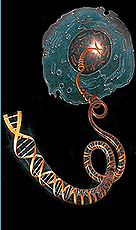 |
Innerspace (6th - Adult) 31 minThis innovative presentation takes viewers on a riveting journey inward, into the vast and mysterious universe of the human body. Just as traditional planetarium shows use a panoramic format to illuminate the unseen expanse of the cosmos, InnerSpace brings viewers face-to-face with the hidden realms inside our own bodies. Spectacular closeup views provided by cinemicrography, fiber optics, electron micrography, and other diagnostic tools reveal the micro-landscapes of the body in heart-stopping detail. The presentation also combines video, three-dimensional animation, and other media that help to immerse audiences in this unfamiliar environment. Audiences travel through the skin, into arteries, and throughout the body to become eyewitnesses to a host of fascinating processes, including the delicate interplay of neurons and the workings of the genetic code. InnerSpace also documents the battle for health that rages daily on the inner frontier as the body fights off invisible invaders and genetic mutations from within. The presentation shows not only how the immune system wages war against parasites, bacteria, and viruses, but also how medicinal interventions -- everything from vaccines to cutting-edge techniques like gene therapy -- can boost the body's natural defensive powers. |





















